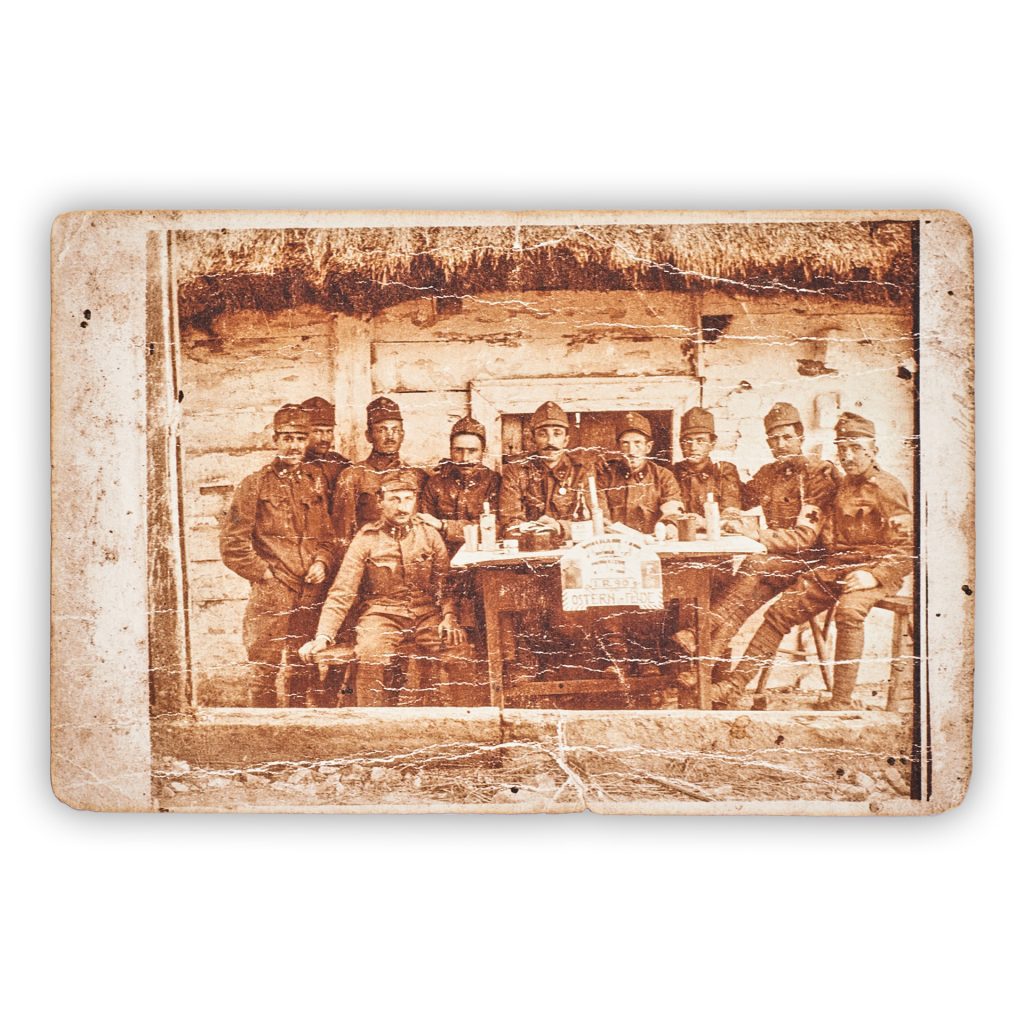Postcard sent by a Jewish soldier in the Austro-Hungarian army to his mother, showing a picture of Jewish soldiers celebrating Passover in the field
Austria, 1916
Courtesy of Lea Chencinski, née Kupferschmidt
Must Know
This photograph shows a group of Jewish soldiers celebrating the Jewish holiday of Passover. The soldiers served for the Austro-Hungarian army.
The Austro-Hungarian army was a melting pot of various nationalities including a minority of around 2.5 million Jews who fought on all fronts. Austria was the first country in Europe to introduce military conscription for Jews at the end of the 18th century.
Jewish religious services like Passover were organised by rabbis who themselves served in the Austro-Hungarian army. At the outbreak of World War I in 1914, 10 rabbis were registered in the army and towards the end around 76 rabbis were involved, all of them captains. Aside from their role as religious leaders, they also acted as military censors and intermediaries for all hebrew correspondence.
More Info
Many Austro-Hungarian Jews, while being a minority, made up around 10% of the Viennese population. Many were well off and has considerable social influence within their communities. Likewise, Jews served in all rans including generals. However, some did have to convert to Catholicism in order to gain promotions. Around 40,000 Austro-Hungarian Jews were killed in action during World War I. The Jewish integration in Austria Hungary was not only on a military level. Jews were often patriotic towards the Austrian-Hungarian Empire and its ruler, Kaiser Franz, due to the civil rights granted to them.
Passover (Pesach) is the Jewish holiday that celebrated the exodus or departure of the Jews from Egypt where they were slaves. The holiday is in the Jewish month of Nisan which usually parallels the months of March or April. On passover Jews come together for a passover dinner (Seder) where the story of passover is told through the reading of the hadagah. In the photograph the group of soldiers have come together around a table to celebrate the Jewish tradition.

